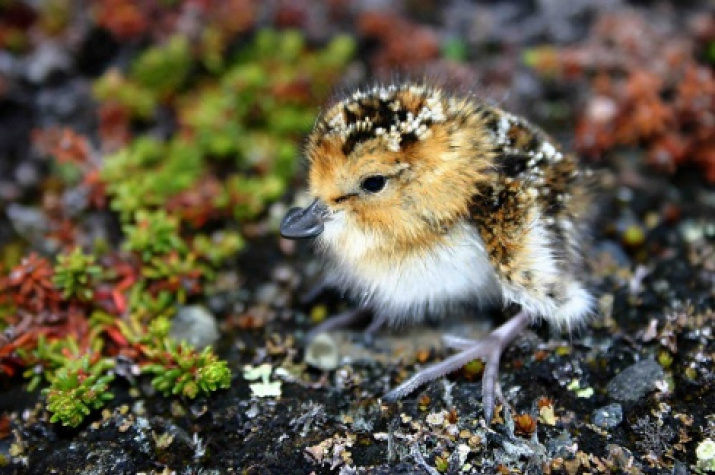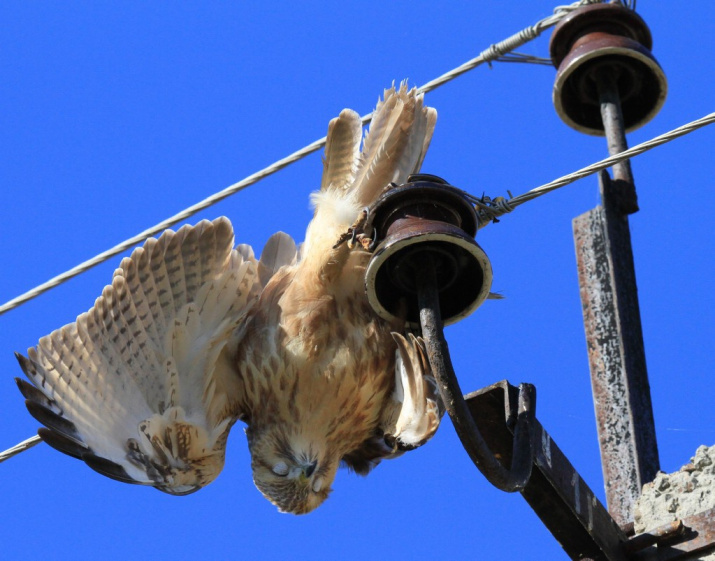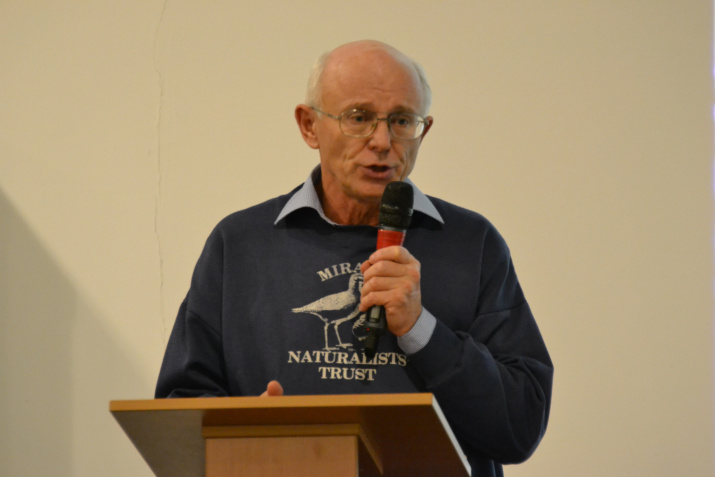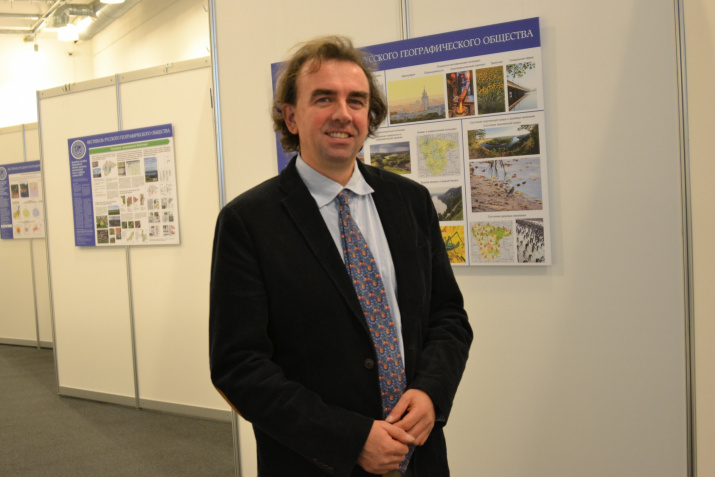A roundtable held on the sixth day of the Festival was dedicated to problems of migratory birds conservation.
Electric power lines are killers.
Nowadays it is impossible to imagine life without energy, and to transmit energy we need power lines. Unfortunately, power lines often kill birds. When they sit on high-voltage lines they risk to burn their feathers and claws. According to President of Russian Bird Conservation Union, Candidate of Biological Sciences Andrey Saltykov, in our country about 200-250 thousand birds are killed every year by electric shock on power lines! The situation is aggravated by the fact that rare Falconiformes (which include white-tailed eagle) are often found among the victims.
In 1980 Vasily Peskov, remarkable journalist and naturalist had his book "Birds on Wires" published. It surely was noticed, but the measures taken obviously were not enough. Therefore, the scientist proposes to conduct a survey of power lines in protected and important bird areas and to equip dangerous areas with protective devices.
Falcons for sale
Director of Siberian Environmental Center Elvira Nikolenko also spoke about the problem of rare birds of prey conservation. Apart from the fact that falcons and eagles are killed by power lines, they often become victims of poachers - birds are killed and caught for sale in Arab countries for falconry. The latter also leads to the impoverishment of the gene pool - hunters prefer birds with a certain color, which are valued higher in the market.
In addition, birds of prey often die of poisoning, including lead poisoning, and from the destruction of their natural habitat - deforestation and fires in the grass steppes, where some species make their nests.
On the verge of extinction
Pavel Tomkovich, Sc.D., Head of Ornithology Department of Research Zoological Museum, Faculty of Biology, Moscow State University spoke about one of the rarest birds on the planet - the spoon-billed sandpiper.
Since 1978, this tiny bird is listed in absolutely all national Red Books. In the 1970s, there were 2-2,8 thousand pairs, but only 40 years later the population has declined by 90%, and in recent years there are no more than a hundred breeding pairs in the world. Scientists have found that a critical reduction in the population is associated with high mortality. The spoon-billed sandpiper is a migratory species that uses the East Asian Flyway. But with the economic development of the region, in the areas where earlier birds could make a stop to replenish strength, factories and ports are built, field are plowed. In addition, people eat this bird.
To save the birds the project on breeding them in captivity was started in 2011. As Tomkovich explained if at the beginning of the breeding period eggs are taken from the couple, birds make a new oviposition. Scientists place withdrawn "children" in incubators and then chicks are raised in England, where there are the most favorable conditions. Thus, people "force" birds to bring more offsprings. In vitro the survival probability is several times higher than in the wild. Scientists hope that in the near future the first hatching will give offspring.
In 2012 the project "Road to Life" started. Within its framework researchers also collect eggs of spoon-billed sandpipers, but kids are raised in Chukotka, where the special aviary for birds was built. There toddlers learn to fly and as soon they learn the basics of this art they are released. Young birds may return to the cage, and can fly away for the winter in warmer climates. In 2014 the first female of 9 chicks released in 2012 into the wild, returned to the breeding grounds and laid eggs. According to Tomkovich this fact, and also the fact that over the last 3 years the number of birds has stabilized, give hope for the salvage of these wonderful birds.
Preservation and study of birds
Director of Bird Banding Center at Royal Belgian Institute of Natural Sciences Didier Vangeluv spoke about the history of migratory birds banding. This is not only a method of studying birds - the banding allows to create maps of migration routes and corridors of birds, but also the link between countries.
Supervisor of «Study and protection of rare species of raptors in Southern Siberia» project by Siberian Environmental Center Igor Karjakin spoke about new methods of collecting relevant information and public control. "Crowdsourcing could be a major method to provide data for the Red Book and monitor in protected areas," - says Karjakin.
Senior Research Fellow of All-Russian Research Institute for Nature Conservation Dmitry Dorofeev spoke about waterfowl hunting. Until the early 1970s the number of the white-fronted goose did not exceed 100 thousand individuals, but in the next 15 years, the population of this species has grown to nearly one million. This can be explained by the unprecedented set of circumstances: in Europe there were restrictions on the spring hunt, and in Russia - a moratorium in force until the mid 80s. However, an example of white-fronted goose, unfortunately, is more the exception of the global practice, and the number of most species continues to decline. According to the scientist in this regard in our country we must introduce a minimum mandatory of hunting and reinforce control over the issuance of a hunting license, update and make publicly available data on trends in numbers of hunted species.
Following the results of the roundtable a resolution will be prepared in a week which, as biologists hope, will help improve measures for the conservation of birds in Russia.




